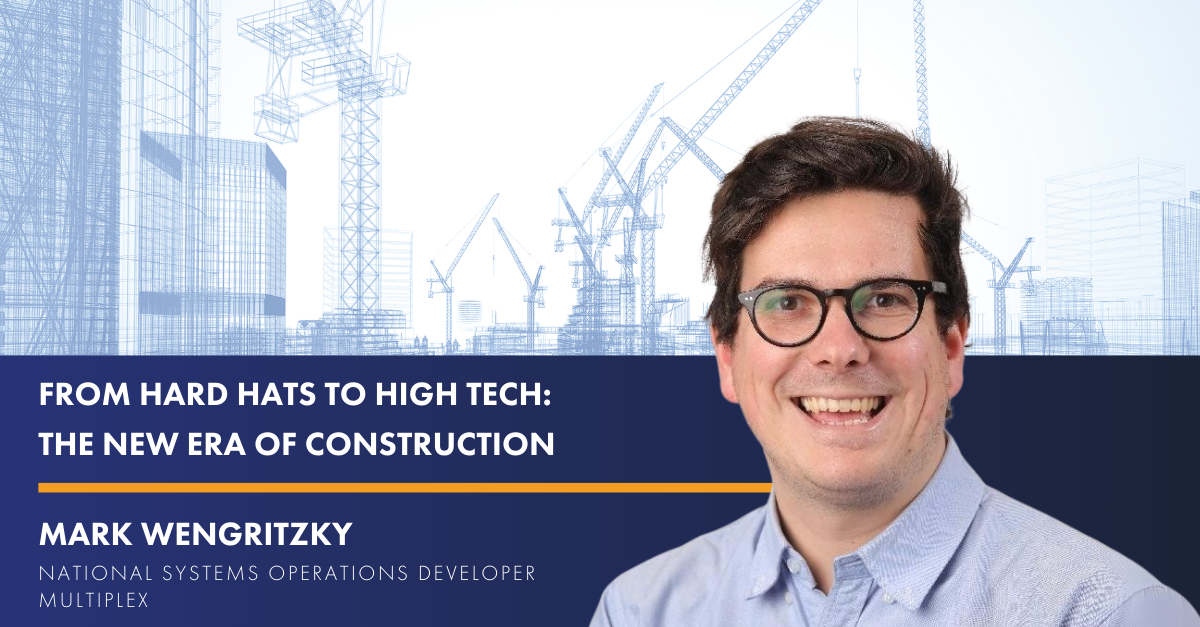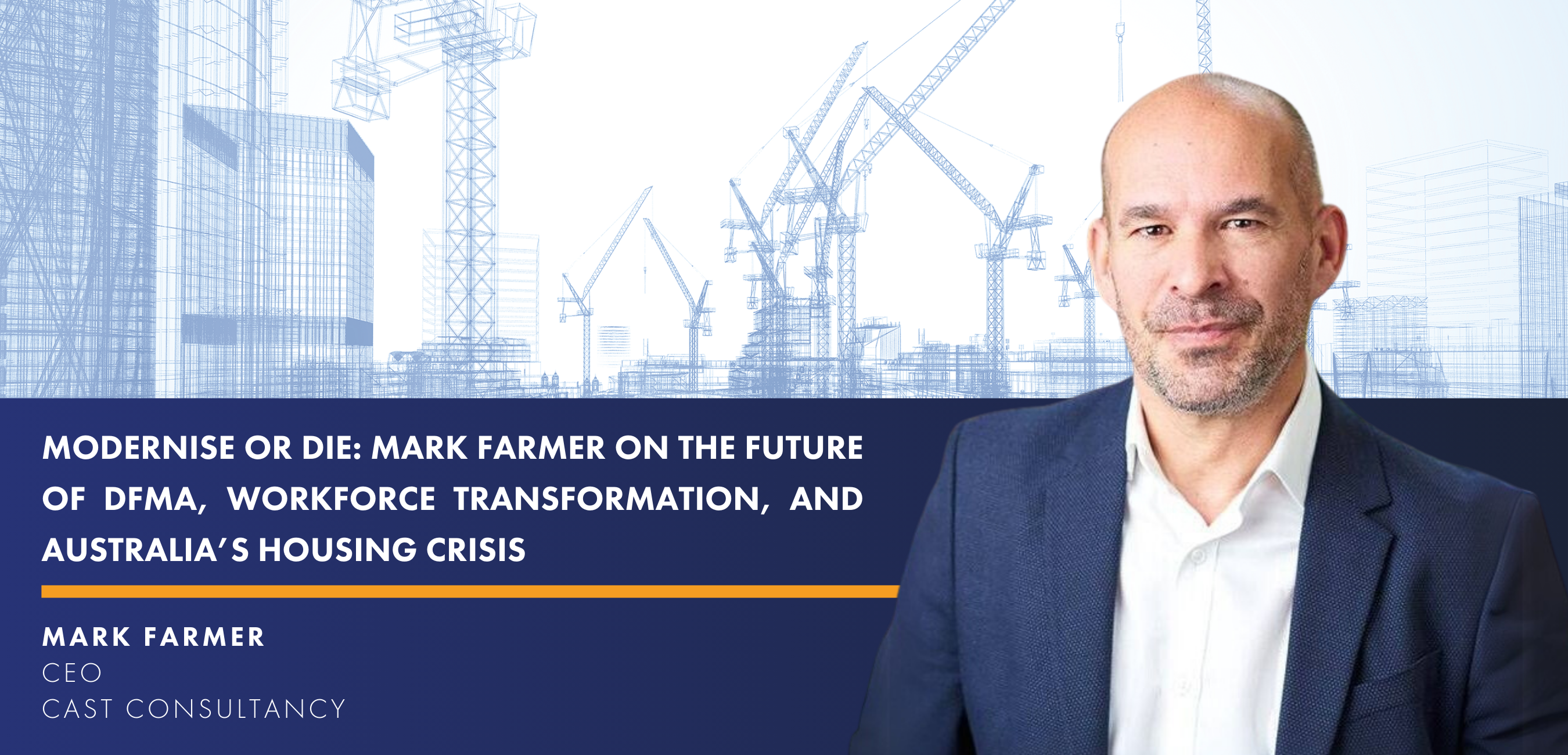Balder Tol is General Manager of Australia at WeWork, a coworking company providing flexible workspaces and community. With the pandemic starting to slow down in Australia, WeWork is launching its On Demand product in March. We shared a Zoom call with Balder recently and discussed what employees need in their workspace and the role of the flexible office in terms of productivity, creativity, and community.
FuturePlace: What are some changes you’re seeing in flexible workspaces due to the trend of hybrid work models?
Balder Tol: For the first time, we’re really forced to ask our workforce, our employees, what they want rather than executives or business leaders making decisions for them. If you think about the old school nature of real estate, executive leaders have always set the decisions and then the entire organization needs to fit into that structure. That was already changing, but 2020 accelerated the transformation. Now, five or ten years of trends that were brewing in the background were fast-tracked in six months’ time.
FP: What did you focus on last year? I know it was a bit of a surprise for us all.
BT: The pandemic changed how we view offices, how we work, even how we live, and people are transferring cities and moving homes. How we respond to that is the most fascinating part. Beyond creating a safe space for our members to work, we continued to iterate on our product and further develop what flexibility will mean in the future. Looking at how our members consume space and how we can make our collaborative communities available to more people. That’s where our On Demand and our All Access membership options came in.
Late last year, WeWork in partnership with brightspot strategy, looked into the policies and conditions that impact an employee’s performance after returning to the workplace. The study found that morale rose for 40 percent of people after returning to an office space for at least one day per week, and that increased to 54 percent for those who returned four to five days per week. Productivity, personal well-being and sense of company culture were all boosted by a return to the workplace.
FP: What do people and companies want out of a space now?
BT: There’s a fundamental shift in how real estate is being viewed and it comes with changing how we work. We’ve all learned how to do business over Zoom, but although we can work from home, we might not want to. That’s where the rise in flexibility comes in. We expect employees will want more flexibility to work where they can be their most productive for the task at hand, perhaps even a hybrid between the office and home. We’re already finding that the role of the physical office and its place in the future of work will change: as a place to meet, build culture, foster relationships. With this emerging trend, we’ll see the physical office becoming a more club-like space; a place of creative interaction. Think about the office as a space where we network, where we work side-by-side, and co-create and innovate. Shared spaces are best suited to intentional collaborative activities such as problem-solving and socialising; those aspects of work that people missed while working from home.
FP: What can a flexible space offer workers?
BT: Flexible office space is emerging as an attractive option for workers and companies that are frustrated with the “bedroom as a boardroom” life. However, they don’t want to come back to a traditional office. We’re looking at flexibility of time, space and location; how many different space typologies can we make available? How can we make as many locations available as possible? We are moving into a new normal, as much as I don’t like that phrase. We’ve seen that work from home can be done; it has its benefits with spending time with the family and reduced commutes, but it also has shown where the office has value. For WeWork, that’s how we started! We built our locations to have both a private office for you to do your deep focus work but the moment you step out of that office, it’s designed to collaborate and inspire. Organizations want to come back to the workplace for the social element and the collaborative tools. It’s a choice for our members to pick where they want to work for the task at hand.
FP: What are some of the tools you’re using to fuel collaboration within a space?
BT: Collaboration is best done in person so we want to make it easy for our members to reserve, book, and make use of spaces. Both On Demand and All Access address these needs. Recognising that our members needed greater flexibility in where and how they work, in September 2020, we expanded All Access benefits to all members. Some members were stuck in different countries and needed connectivity.
After a successful international pilot, WeWork Australia is set to launch a new pay-as-you-go product On Demand this year, allowing non-members to book workspace on a daily basis or conference rooms by the hour through a free, dedicated app, providing individuals with the ability to choose where, when, and how they work, right from their phone Our On Demand product has zero upfront commitment under a pay-as-you-go model and opens WeWork up to a lot of different user groups. And it’s proving to be sticky: just over half of the users who signed up booked a second day, and 67 per cent of bookings in New York were from repeat customers. The pay-as-you-go model gives greater access to real estate. Let’s not forget that four or five years ago the only way you had access to these types of spaces was through a conference center or signing a 5-10 year lease. Now it’s available through your smartphone.
FP: Speaking of travel, what are some of the access control and sanitisation processes you’re using at WeWork locations?
BT: We have invested in adapting our spaces to ensure our employees and members feel safe when working from our spaces. We spent the month of April redesigning our offices to accommodate professional distancing in our common areas and conference rooms. We redesigned our 800+ buildings, de-densifying our spaces, improving air circulation, and enhancing our sanitization efforts to keep our communities safe. For example, when the pandemic started, we developed an international future of workspace with professional distancing, cleanliness and behavioral signage. You see these more often in retail spaces. We also staggered seating and added buffer zones that align with local government guidelines on social distancing while increasing sanitisation of common areas, high-touch points, and frequently visited areas. We made it easy for our members to have access to sanitisation products if they feel more comfortable if they wipe items down themselves. The last part is that we do bring people from different organizations together so behavioral signage around the buildings really helped direct members around the space.
FP: That all helps to make people feel safe. Are there any standards that measure this?
BT: Absolutely, safety comes first. WeWork’s health and safety measures were recently awarded conformity with the highest of global standards. The certification by Bureau Veritas came about after an independent audit of WeWork’s COVID-19 health and safety measures, response plans, and space modifications. In speaking with our members, we know employers are seeking an environment where their employees can reunite safely, yet maintain a sense of collaboration and innovation – something that’s lacked with individuals working from home.
FP: How do you think On Demand will catch on in Australia?
BT: Our U.S. pilot found users appreciate the flexibility of easily and quickly securing space, with most users booking their reservation less than one day prior to use. The positive response to this pilot underscores the growing trend of workers craving in-person, human connection, and in-office collaboration. So we expect this pattern to follow with the Australian launch of On Demand later this year. With a single black membership card, members can gain access to physical space and other members all around the globe, which is a powerful tool to facilitate collaboration. With the return to the office on the horizon at least for us in Australia, the need for a clean and flexible workplace will grow. I think in the next six months, people will be experimental and try different models, but we’re already seeing strong indicators that the in-person experience at work is something people are craving.
FP: What do you think is next?
BT: Moving into 2021, the purpose of the office is really being reimagined. Flexibility is a must and people are social animals! We crave that human to human interaction and although Zoom helps, it doesn’t replace it. Wellbeing is key: it’s important for employers to understand that mentally, people may need more reassurance about their health and safety, and may need time to readjust. The past few months have been incredibly stressful for many people. It’s really vital to invest in the wellbeing of your staff now more than ever, whatever sector you are in. We’re hearing from our members that as they return to our spaces they feel comfortable and trust WeWork in providing spaces that prioritise their wellbeing.
A flexible office space gives the personal empowerment and autonomy to be results-oriented and outcome-driven rather than “your employment contract says 9-5 so you have to be at the office.” That fundamental shift should have happened 10 years ago but it’s accelerated now and it’s forcing employers to think about their workforce differently.
Future of Office Space Summit
Balder will be speaking at our upcoming Future of Office Space Summit, taking place from 17-18 February 2021. Get insights from technology & innovation leaders, tenant & workplace experience experts, property fund managers and industry thought leaders.







